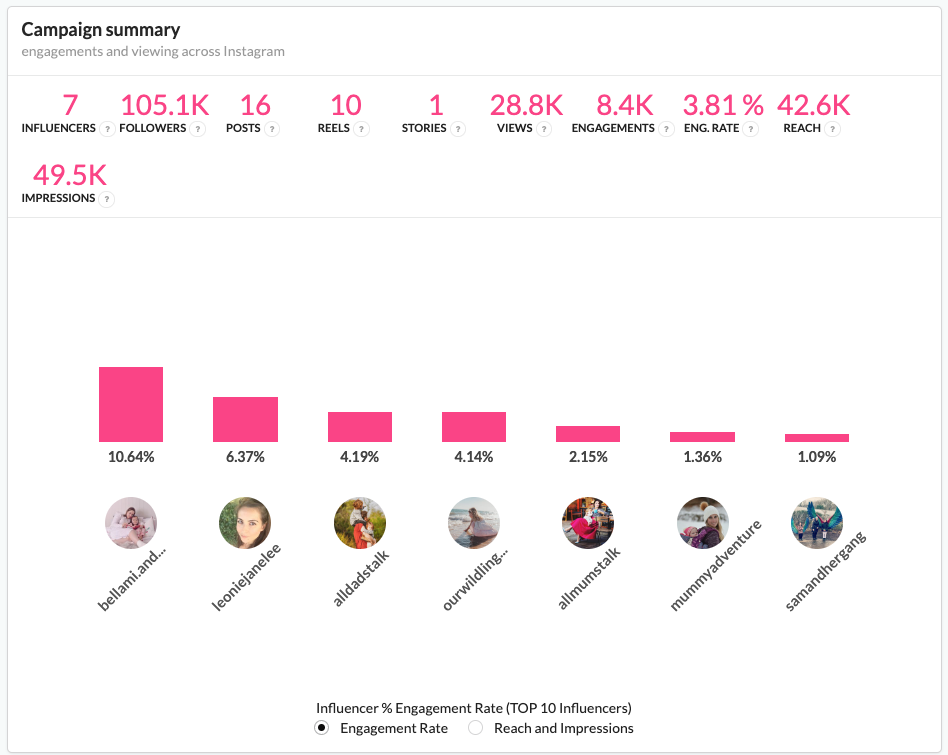
Measuring influencer marketing return on investment (ROI) can be challenging but it’s important for understanding the effectiveness and value of your influencer campaigns. Here are ten best practices to consider when measuring influencer marketing ROI:
Clearly define your objectives
Before launching any influencer marketing campaign, clearly define your goals and objectives. Are you aiming to increase brand awareness, drive website traffic, generate sales, or engage with a specific target audience? Defining specific and measurable objectives will help you determine the appropriate metrics to track.
Establish key performance indicators (KPIs)
Identify the key metrics that align with your objectives. These could include metrics like reach, engagement (likes, comments, shares), click-through rates, conversion rates, sales, or brand sentiment. Choose KPIs that are relevant to your goals and can be tracked accurately.
Track unique campaign URLs and promo codes
Assign unique URLs or promo codes to your influencer campaigns. This allows you to directly attribute website traffic or sales generated from those specific campaigns. Tools like UTM parameters can help track traffic sources more precisely.
Utilize affiliate marketing programs
Consider using affiliate marketing programs to track conversions and sales generated by influencers. Affiliate links can be used to track clicks, purchases, and the overall revenue generated from each influencer. This provides a clear link between the influencer’s efforts and the results.
Use trackable links and coupon codes
Provide influencers with trackable links or unique coupon codes that their followers can use. This helps you track the traffic, conversions, and revenue specifically generated by each influencer.

Monitor engagement metrics
Engagement metrics, such as likes, comments, and shares, provide insights into how well your influencer content resonates with the audience. Monitoring these metrics can help you assess the effectiveness of your influencer partnerships and the level of audience engagement.
Calculate return on ad spend (ROAS)
ROAS is a metric that calculates the revenue generated for every dollar spent on advertising. By tracking the revenue generated from your influencer campaigns and dividing it by the total amount spent, you can determine the ROAS. This metric helps you evaluate the efficiency of your influencer marketing investments.
Conduct surveys or interviews
Consider conducting surveys or interviews to gather direct feedback from your target audience. This qualitative data can provide valuable insights into the impact and perception of your influencer campaigns.
Compare performance across campaigns
Keep a record of your influencer campaigns’ performance and compare them over time. Analyzing the data across multiple campaigns can help identify trends, benchmarks and the overall effectiveness of your influencer marketing efforts.
Use analytics and tracking tools
Leverage various analytics and tracking tools, such as Google Analytics, social media analytics platforms, or influencer marketing platforms. These tools provide valuable data and insights to track the performance of your influencer campaigns.
Remember that measuring influencer marketing ROI is not a one-size-fits-all approach. Tailor your measurement strategies based on your specific objectives, industry, and available resources. Continuously evaluate and refine your measurement techniques to improve the accuracy and effectiveness of your influencer marketing campaigns.
Having a great platform, that can generate indepth reports on the metrics list above is a great start. ParentStars has its own platform designed to do just that. You can check out the 1 min video and book a demo of the platform here.
